Our Man in Cuba: A Small Ship Excursion to a Beautiful Caribbean Island Country Scarred by Poverty and History
“Our Man in Cuba: A Small Ship Excursion to a Beautiful Caribbean Island Country Scarred by Poverty and History,” PRIMETIMES,(Ithaca Times), Autumn 2010, pp.8-13
All photos by Marcia Jacobson
“[Cuba is] simply a tired little country, no threat to anyone, with impressive health care and education but a repressive police state and a dysfunctional economy’” (Nicholas Kristof; https://www.nytimes.com/2019/01/23/opinion/cuba-embargo.htmlIntroduction
I had hoped to avoid the rigid People-to-People program--required by the US government of US citizens visiting Cuba--and was sure if Hilary Clinton had won in 2106 she would continue the rapprochement with Cuba begun by Obama. But Trump changed all that. So along with 185 other passengers whom my wife, Marcia Jacobson, and I had never met, we booked a twelve-day cruise to Cuba on Pearl Mist, a ship that is part of the privately owed American Cruise Lines which specializes in river cruises. We much prefer smaller ships to the larger cruise ships but the main reasons we chose this boat was that it visited four ports--Santiago, Trinidad, Cienfuegos, and Havana (2 nights in a hotel)--whereas larger cruise ships only visit Havana. Our fellow passengers were an older, somewhat more well travelled and less vigorous group than the group with whom we went to Antarctica with Ponant Cruises in December 2017. Ponant also visits Cuba but their dates didn’t work for us since I am teaching at Cornell and wanted to go between my semesters.
The Ship Experience
We left Port Everglades in Fort Lauderdale at 1 pm on Dec. 29, 2018 after a slow boarding process following an included night at a nearby drab Sheraton Four Points.
We did not leave the ship until Dec. 31, the evening of the third day, but the ship provided talks and entertainment, including a lively male duo comprised of one man who played the guitar and knowledgeably discussed the history of pop music from the 50s to 80s, and tried to sing, while the other played the keyboard and could actually sing. The live music and festive evenings continued for the nine days we were on ship. A number of guests including us danced to 60s and 70s Oldies. But those expecting an elaborate night club or show entertainment might have been a tad disappointed. A Cuban folk music quarte and a Cuban Jazz group were the best on board entertainment.
Departure day included one of the three Cruise Directors giving an introductory talk in which we learned for the first time that we were spending two nights in a hotel in Havana because the Cuban government decided that the Havana port should give preference to larger ships. Throughout the voyage, guests were provided with informal and not always well-organized talks by two anxious-to-please women familiar with Cuba. But we would have preferred in depth lectures by professionals—professors or perhaps retired diplomats-- on Cuba’s history and culture. On days not in port, I spent my spare time walking on the decks for exercise. Pearl Mist does not have an exercise room.
Our cabin was almost 300 square feet and was quite comfortable, although the internet did not work very well and some days did not work at all. If you take this boat, be advised not to depend on reading about Cuba or anything else online, although the boat did provide films which could be accessed on the cabin TV, and offered a small library with resources on Cuba.
Unlike some ships on which we have sailed, we found we needed to ask specifically for some of the amenities—like a refrigerator in our room, a fan to supplement the air conditioner on hot afternoons, free laundry service, fruit in our cabin, fresh orange juice and fresh berries at breakfast—rather than having such luxuries provided without request. In other words the cruise company met my expectations because I asked. Our attentive cabin steward was a plus.
The food was about what I expected and seemed to satisfy most of the guests, but over twelve days I would say it was more respectable than exciting. With a little early prompting to the dining room supervisor, the at first spotty dining room service improved, at least for us. For the most part the meat dishes were much better than the fish. The prime rib the first night was quite good as was a steak later in the trip. Soups were often interesting, despite a few misses. We would have liked more Cuban food and less bland American food.
The Pearl Mist is a slow-moving vessel and it took us more than fifty-three hours to reach Santiago from Fort Lauderdale. On the second day the seas became rough and many people were seasick. The Cruise Directors might have spoken about seasickness. While Dramamine was readily available, I would recommend advanced warning telling people who were prone to motion seasickness to get patches.
We enjoyed our days on ship and are grateful for the opportunity to experience and learn about Cuba. But partly due to the People-to-People stipulations and partly due to Pearl Mist’s inability to find qualified guides or take the initiative to organize more substantive and faster paced tours, this was not the most professionally organized trip of our travels.
I should mention, too, that the Pearl Mist’s tipping suggestion of $220 per person--$20 a person per day--was exorbitant and became even more so by not taking into account that all passengers were off the boat two full days and most of a third. Most experienced travellers strongly object to this kind anonymous tipping and would much prefer that tipping be included, or, as a fallback, would prefer to tip their cabin steward and perhaps give a nominal sum to others who made their trip enjoyable.
The Cuba Experience
What People-to-People means is that all visits to Cuba are to be educational or cultural exchanges rather than simply for pleasure; for example, visiting beaches or going on a half-day fishing trip is prohibited. What our tour included was visits to historic sites and local artisans, exposure to Cuban music on and off our ship, and visits to places of business, some of which, notably restaurants and our Iberostar hotel in Havana, were privately owned. Although the USA has treated Cuba shabbily by continuing to enforce an embargo which undermines Cuba’s standard of living, the Cubans are welcoming to US citizens, in part no doubt because US visitors contribute to their economy and more than most other visitors represent high-end tourism.
Our first stop was in Santiago, Cuba’s second largest city and the city which first fell in 1959 to Castro; Havana surrendered a week later. “The Triumph of the Revolution” is the universal term used by guides not only for Castro’s overthrowing the corrupt dictator Battista but also for the ensuing period from then to now. Battista’s regime encouraged the investment of the American Mafia and neglected the interests of the urban and agrarian working class. To get a sense of the corruption and decadence in Cuba and especially Havana on the cusp of the Castro revolution, read Graham Greene’s 1958 Our Man in Havana which was turned into a successful 1958 film. (My article title riffs on Greene’s title.)
Our Santiago experience began with a New Year’s Eve visit sit to the Tropicana Cabaret. Unfortunately our disappointing experience—inattentive service, bad seats, and an incoherent guide--was symptomatic of a lack of planning that intermittently informed some of our excursions. We returned at 1 am, having to get up at 7 am the next morning to get ready for our full day tour of Santiago, Cuba’s second largest city.
On our Santiago day tour we visited Santa Ifigenia Cemetery and saw Castro’s memorial as well as other tombs of important historic figures and saw the changing of the guard.
|
Our next stop was a school where people are taught how to play steel drums and where we heard a steel drum concert. We also visited San Juan Hill, the site of the 1898 victory of Theodore Roosevelt’s Rough Riders, as well as an old fort, San Pedro de la Roca Castle.
|
But we only got a somewhat limited sense of Santiago.
|
|
|
Our next stop was in Trinidad, one of Cuba’s oldest towns. Our focus was on the Historic center, known as Old Town, with many preserved and restored Spanish Colonial buildings. We visited the only museum on our entire tour, the Musee Romantico, which unfortunately lacked labels in English; we also made a somewhat perfunctory visit to a pottery workshop. We next visited Cienfuegos--a port city founded by French immigrants in 1819--which is celebrating its 200th anniversary.
|
We saw some beautifully restored Spanish buildings including a church. Our Lady of Charity, with an iconic image of the Virgin appearing to three sailors lost at sea. One highlight was a classical concert of Western music with an Afro-Cuban inflection. Perhaps the best part of our visit to Cienfuegos was our visit the following day to the Botanical Garden—where we had an excellent guide-- before being bused to Havana.
Havana is Cuba’s only bustling city. We were mistakenly told all museums were closed Sunday and Monday, our only days in Havana, although we found out too late that the art museum was open Sunday morning. We tried unsuccessfully to get tickets for the well-regarded Cuban National Ballet’s performance of Swan Lake at the Great Theatre in Havana where we saw an elegantly dressed crowd indicative of the growing financial disparity between a tiny minority and the rest of the population which is overwhelmingly poor.
|
Experiencing Havana while staying in a centrally located hotel was the highlight of our Havana stay, although for some elderly and ill passengers the change from the expected twelve-day cruise was an inconvenience. A splendid. experience was visiting the Hemingway house and museum (Museo Hemingway Finca Vigia), but we also enjoyed a walking tour of Old Havana and its environs and visiting the baroque Cathedral on a Sunday during Mass. The antique American cars providing taxi service is a highlight for many US tourists.
|
With a sound-and light gala featuring elaborate costumes and scantily dressed dancers, the Havana Tropicana show harked back to the Pre-Castro days of Cuba’s decadence. No doubt such performances influenced Las Vegas shows since some of the same people owned casinos in both places.
On balance our bus and walking tours were at best moderately successful in showing us how Cubans lived. We had little substantive interaction with Cuban people other than our guides. On our land tours, we were divided into as many as seven buses which sometimes went to the same places at the same time and sometimes didn’t as when we went to separate restaurants. Our bus tours went slowly, and stopped for long lunches that lasted ninety minutes or more. The tours were led by guides whose facility in English varied greatly. Our tours never visited public institutions like schools, hospitals or legislative bodies or gave us a chance to meet civic leaders. Much time was allotted to shopping; in Havana we were taken to the same shopping site on two consecutive days. We would stop to see a nice view much longer than necessary; and sometimes one or another bus did not complete the stipulated tour. Our tour guides repeated much of the same generic information every day, often provided little in-depth information, and left us to wander around the historic sites with little guidance. Many of our best experiences were when we had completed our official tours and wandered off to explore alone.
I had the sense from watching and listening to other tours that we met and speaking upon our return to other recent tourists that Victor, the young Cuban-American in charge of our tours--one of the three young people who held the title of Cruise Director—was not very accomplished. He did not get the best guides from the Cuban Government and had little ability to structure the tours to be more challenging. I am not sure where Victor’s responsibility began and the Cuban Government’s stopped, but he could have done far more than herd us onto buses for tours that were not well-planned. Victor made no effort to fulfill the requests of many passengers to organize a trip to Cuban synagogues, although we did walk to one on our own.
At the very least our cruise line could have provided supplemental guides to our Cuban guides. The English of our guides ranged from non-existent to—in no more than two cases-- excellent , and their input into our experience likewise varied. Many of our guides spoke Cuban English which they were taught by Cubans who had never been in English speaking countries. Tour guides supplement their modest government wages with tips and tipping was encouraged —sometimes a tad unpleasantly--by the Cruise Directors and the guides.
Since the company knew fifteen days before the trip began and at least a week more before we visited Havana, our last stop, that we were staying in a hotel in Havana, our three Cruise Directors should have known which museums were open and whether ballet tickets were available.
As is almost always the case, walking is the way to see cities. After choosing a half-day walking tour on one of our Havana days, we walked to a synagogue on our own. Through no help from our Cruise Directors, we found out from the hotel concierge where the nearby synagogue was but were told it was closed. It turned out that it was open. That and other walks on our own gave us some sense of how Havana residents live.
While not one of the trips of a lifetime, I am glad we took this trip and learned something about Cuba. There are areas where Pearl Mist could do better. It is essential to have one senior capable and imaginative Tour Director who could get the best guides and arrange more substantive tours within the People-to-People guidelines. On board lectures by real Cuba experts are essential. While life on ship went well for the most part—and Boros the restaurant director was a major plus--the lack of adult leadership when we left the ship was striking. The three young Cruise Directors—only one of whom had a welcoming and ebullient personality-- lacked the knowledge and experience to maximize what we saw and learned.
After fulfilling my responsibility to take part in the slow-moving required People-to--People activities, I often wandered into districts where the average Cubans lived in minimum comfort, sometimes three generations in a tiny apartment. I met people living on the economic edge, including quite a few beggars asking for handouts. Despite being told how safe Cuba’s streets are, we heard firsthand from a few of our fellow passengers of being intimidated by scam artists; my wife and I probably brushed off a few who would have tried to scam us.
Understanding Cuba
Cuba lives in a world of before and after. Before was domination by Spain and then beginning in Jan 1899, the domination by the US, despite Cuba’s so-called independence in 1902. The USA underworld supported the Batista dictatorship established in the 1953 (see The Godfather: Part Two)). After is the “Triumph of the Revolution” in Jan.1959 led by Fidel Castro. Cuba had become a decadent playground where gambling, the sex industry, and money laundering flourished; put another way, it was run on behalf of a tiny exploitive minority at the expense of an impoverished people.
When Castro triumphed the US cheered him on; indeed for the most part the US media enthusiastically followed his campaign and his ragtag military force as if Castro was the star of an American Olympic team. During his April 1959 visit the US welcomed him. Only after Castro declared his allegiance to socialism and nationalized industry and private property, some of which belonged to US companies and citizens, did he become a pariah.
After the Revolution, formerly well-to do and middle-class Cubans subsequently escaped to Florida and formed a cohort hating Castro and Communism; this was a time when denouncing Communism was an US obsession. The US sponsored failed 1961 Bay of Pigs invasion and the Cuban Missile crisis soured relationships for decades. Obama made an effort at rapprochement and he was warmly welcomed when he visited Cuba in March 2015. Indeed, relatively few Americans outside the Cuban refugee community remember exactly why the embargo continues.
The decades long economic and diplomatic embargo dating from Oct. 1960 has devastated Cuba, even more so after the collapse in 1989 of the USSR which had been Cuba’s major support system in exchange for sugarcane. The Cuban economy entered what is called the “Special Period” when the Cubans lived austerely. In recent years Cuba has received some support from Venezuela, but that country is has descended into economic and political chaos.
Fidel Castro died in Nov. 2015 after passing the Presidential torch to his younger brother Raul in 2011. When we visited, it was clear that Fidel is still held in great esteem by virtually all Cubans. While our guides were government employees, they answered questions in a straightforward manor. But true freedom of expression, while encouraged by the recent greater availability of the internet, is often more dream than reality, especially when criticism of the government and in particular its leaders, is the subject (https://www.nytimes.com/2019/01/24/opinion/cuba-censorship-social-media.html).
Although Cubans have longer life expectancies and lower infant mortality than US citizens as well as free education, relatively little crime, and medical care for all, Cuba is a poor country. Most of its citizens live austerely and use ration books provided by the government for their basics necessities. Notwithstanding Cuba’s one-party system and violations of civil rights, there are many worse countries in the world, including those where dissidents disappear and/or are executed and where artists have far less freedom.
With increasing government toleration for entrepreneurial skills and more people working in the private sector, the divide between rich and poor is growing, and the professional class, particularly lawyers and some business owners, have much more money than the workers. Our lunches at private restaurants, notably at Casa Miglis in Havana where we met the Swedish owner of a flourishing establishment featuring a splendid Cuban Jazz band, gave us some sense of this.
Under the new President Miguel Diaz-Canel it is not clear whether there will be fewer or more restrictions on private enterprise. Foreign investment in industry and agriculture will help Cuba’s economy as will greater stress on private enterprise, but growing the small base of those who are economically advantaged will take time. Of course, the result of modified capitalism will be even more economic disparity.
Conclusion: Thinking about the Future of Cuba
Despite our hearing expressions of occasional optimism, Cuba is economically a failing country due to the US Embargo, the collapse of the USSR, and the rigid Marxist economic model that prevailed for decades. Moreover, Cuba has a major imbalance between exports and imports and is suffering a brain drain of its professional class.
With its failing economic infrastructure, warm Caribbean weather, and physical beauty, Cuba’s major export is tourism. Hosting over 4.5 million visitors in 2017, tourism is crucial to Cuba’s stifled economy. But US tourism is only a small part of Cuban tourism if one excludes Cubans who live in the US and have Cuban passports. Those with Cuban passports can fly in and visit on their own; many send some money to their families still living in Cuba (https://www.forbes.com/sites/alexandratalty/2018/04/23/yes-you-can-still-travel-to-cuba/#236e3928378d). If the people I met apart from our own group are any criteria, most of the existing tourism is not luxury tourism with a large profit margin, but rather younger people traveling on a budget.
Should the USA not welcome Cuba as a Caribbean neighbor and help it return to economic viability? What should happen is that the embargo should be lifted, perhaps accompanied by US insistence—hardly enforceable-- that the Cuban government respect human rights and stop imprisoning dissidents. That is, we should invest in and trade with Cuba to help the Cuban people raise their living standard rather than punish them and starve them into submission.
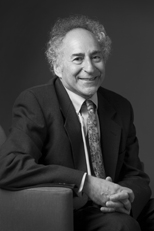
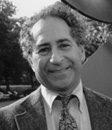
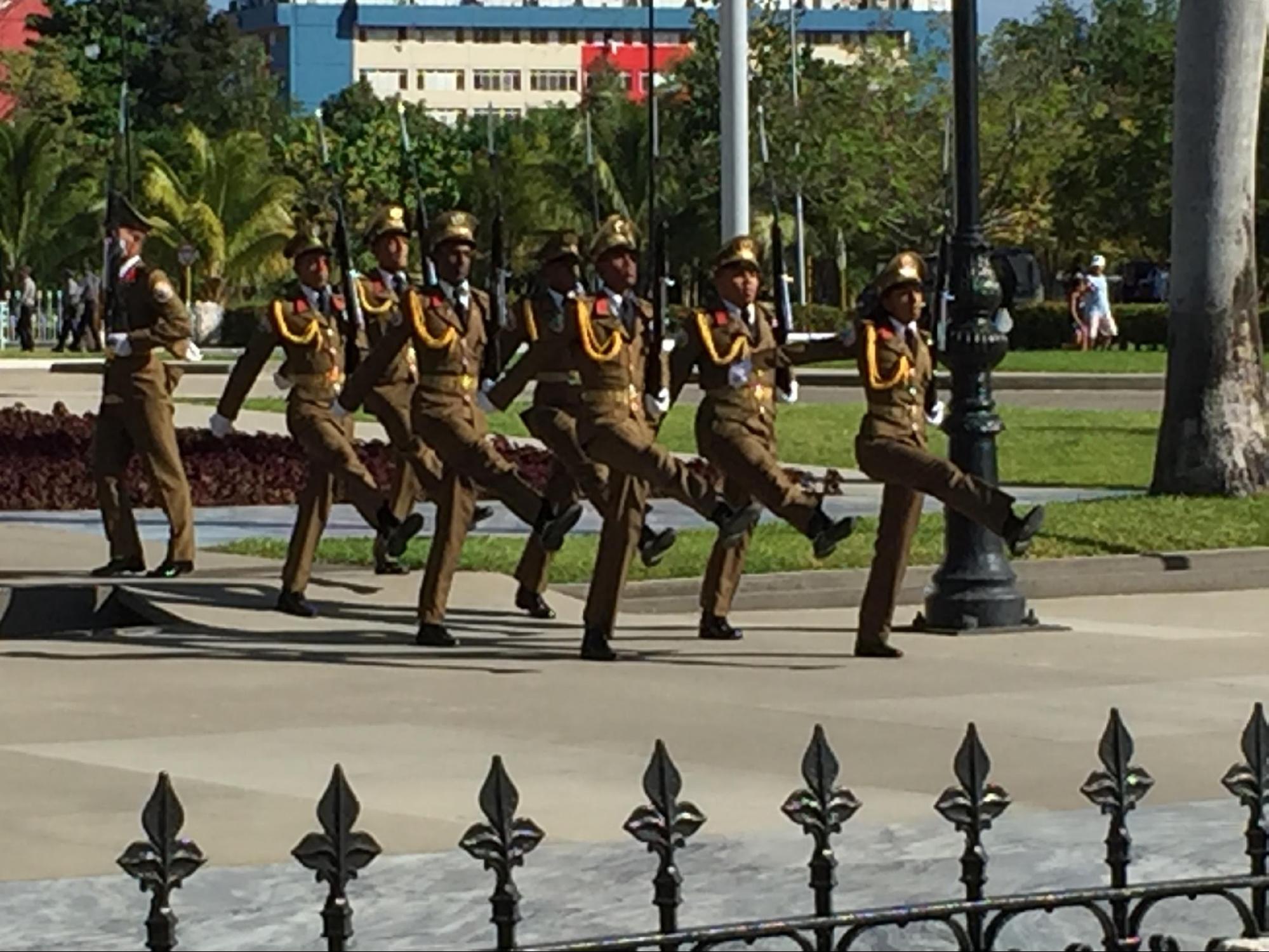 Changing of the guard in Santiago Cemetery
Changing of the guard in Santiago Cemetery
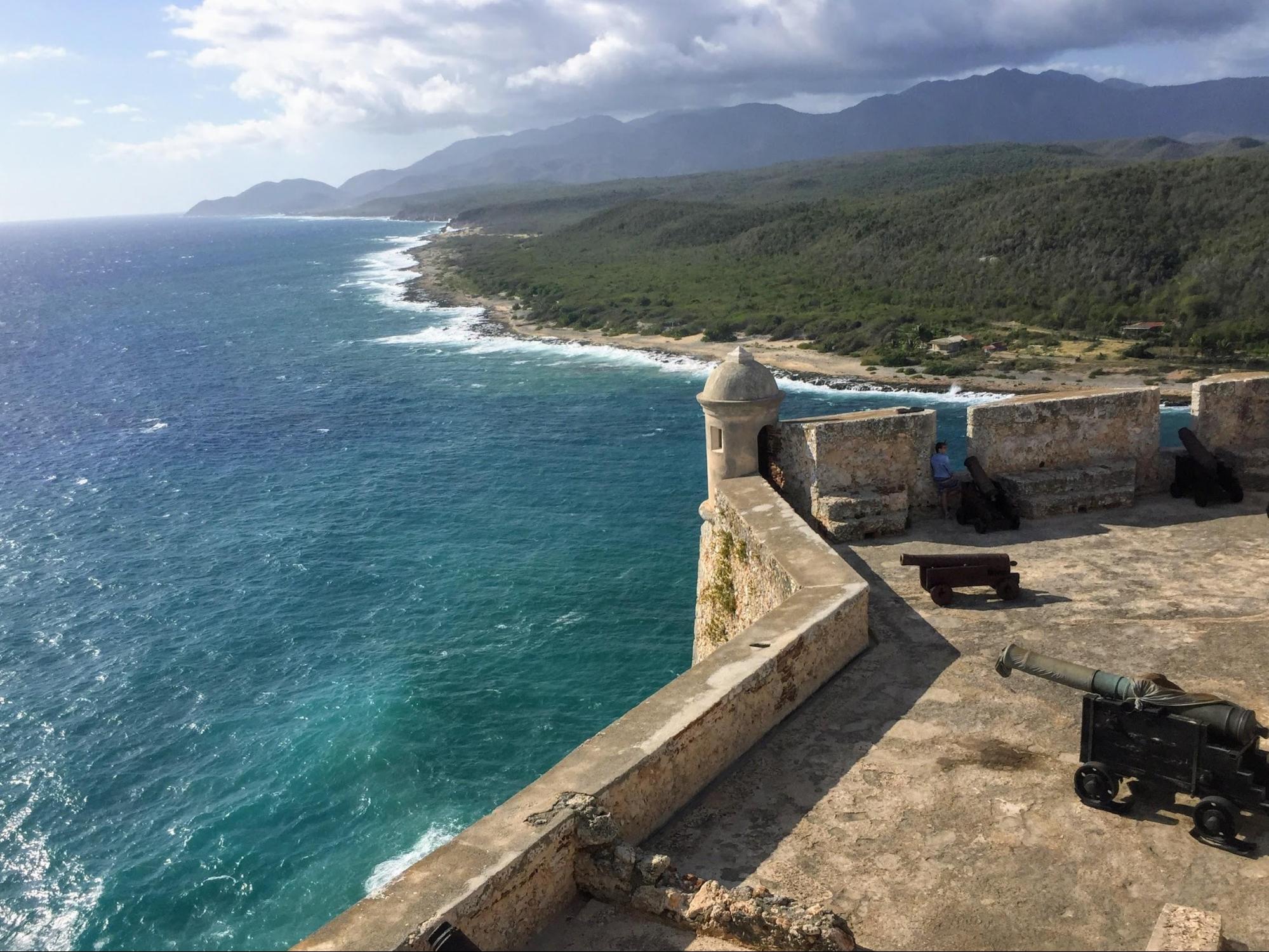 View from San Pedro de la Roca Castle, Santiago
View from San Pedro de la Roca Castle, Santiago
 Political signs in Santiago
Political signs in Santiago
 Cuban bus in Santiago
Cuban bus in Santiago
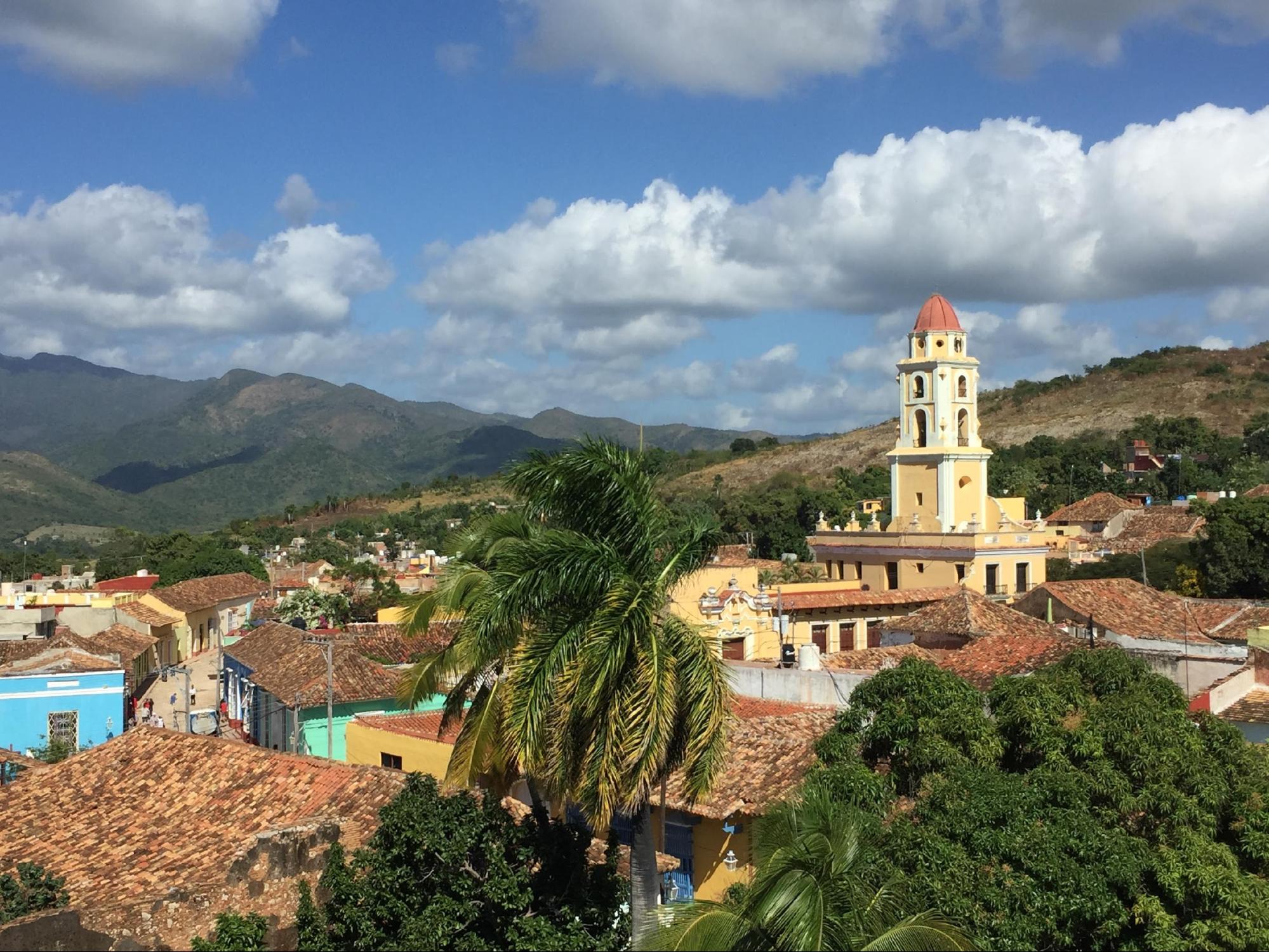 Our Lady of Charity in El Cobra, near Santiago
Our Lady of Charity in El Cobra, near Santiago
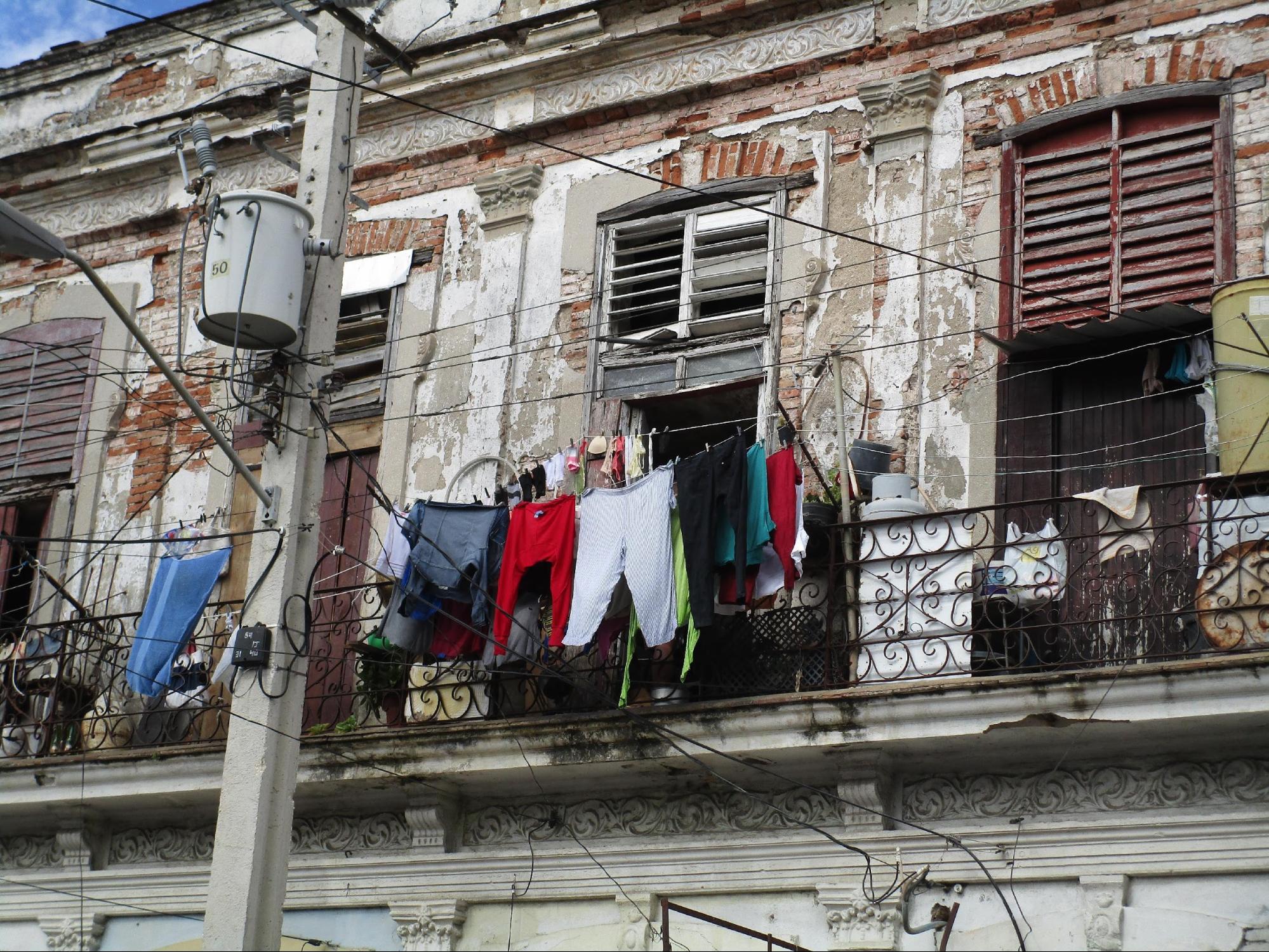 Street scene in Cienfuegos
Street scene in Cienfuegos
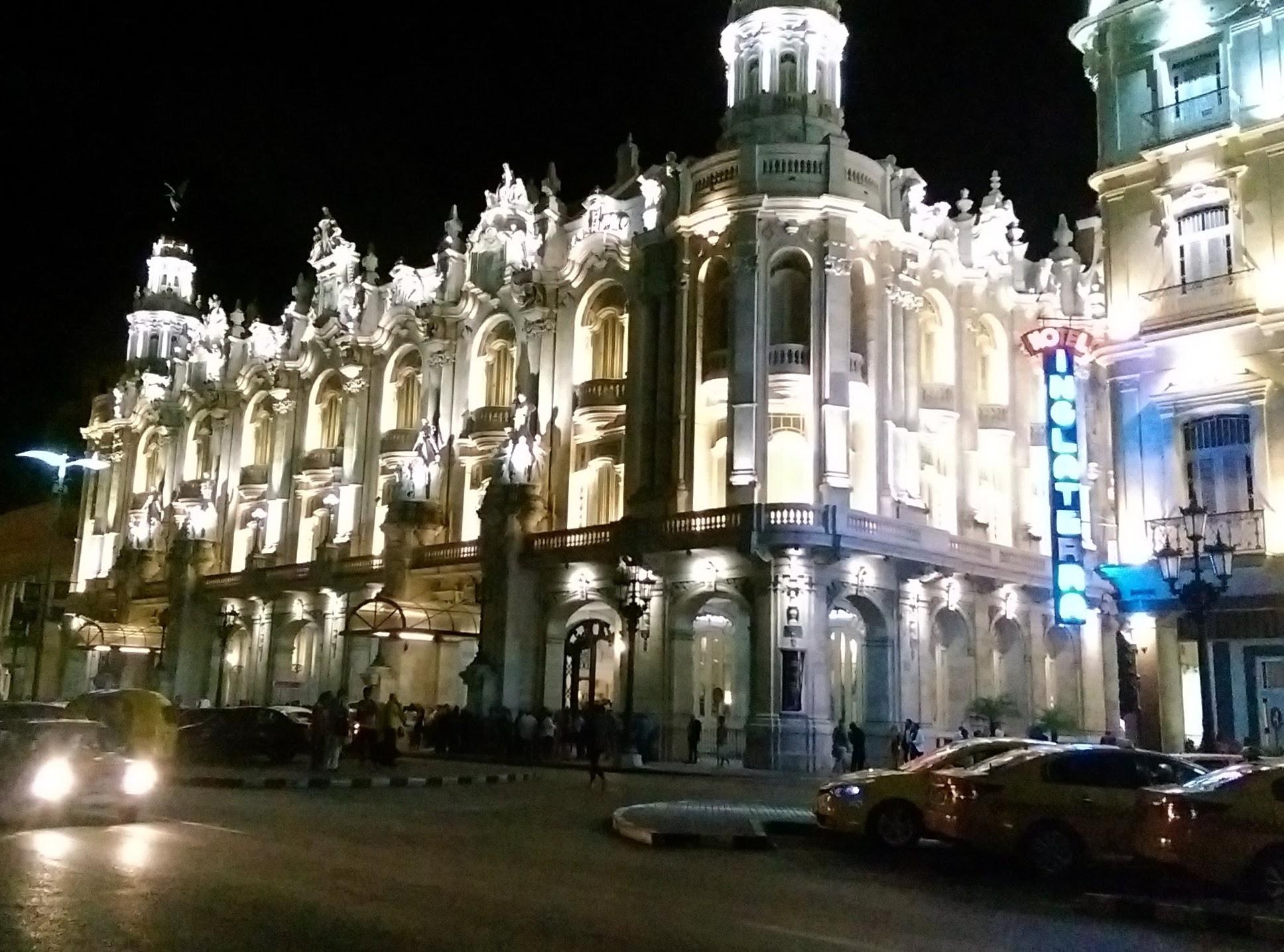 Great Theatre, Havana
Great Theatre, Havana
 American cars in Havana
American cars in Havana